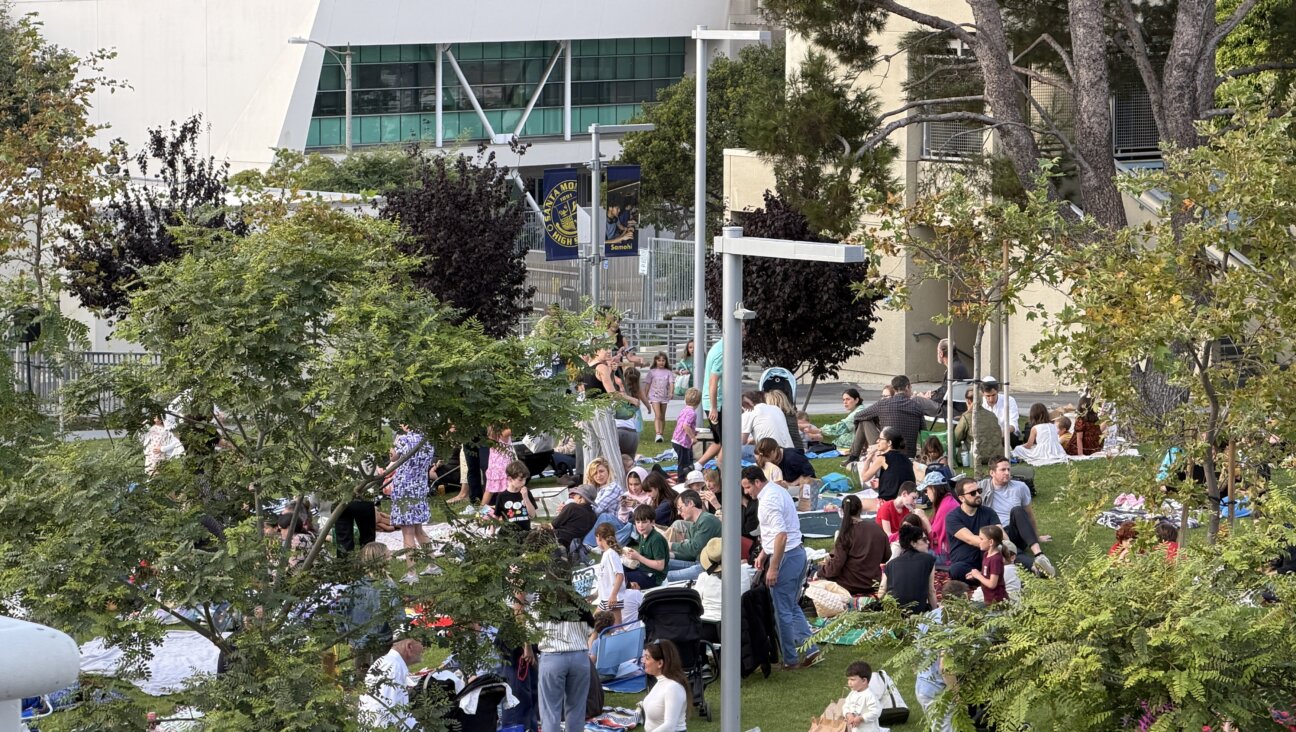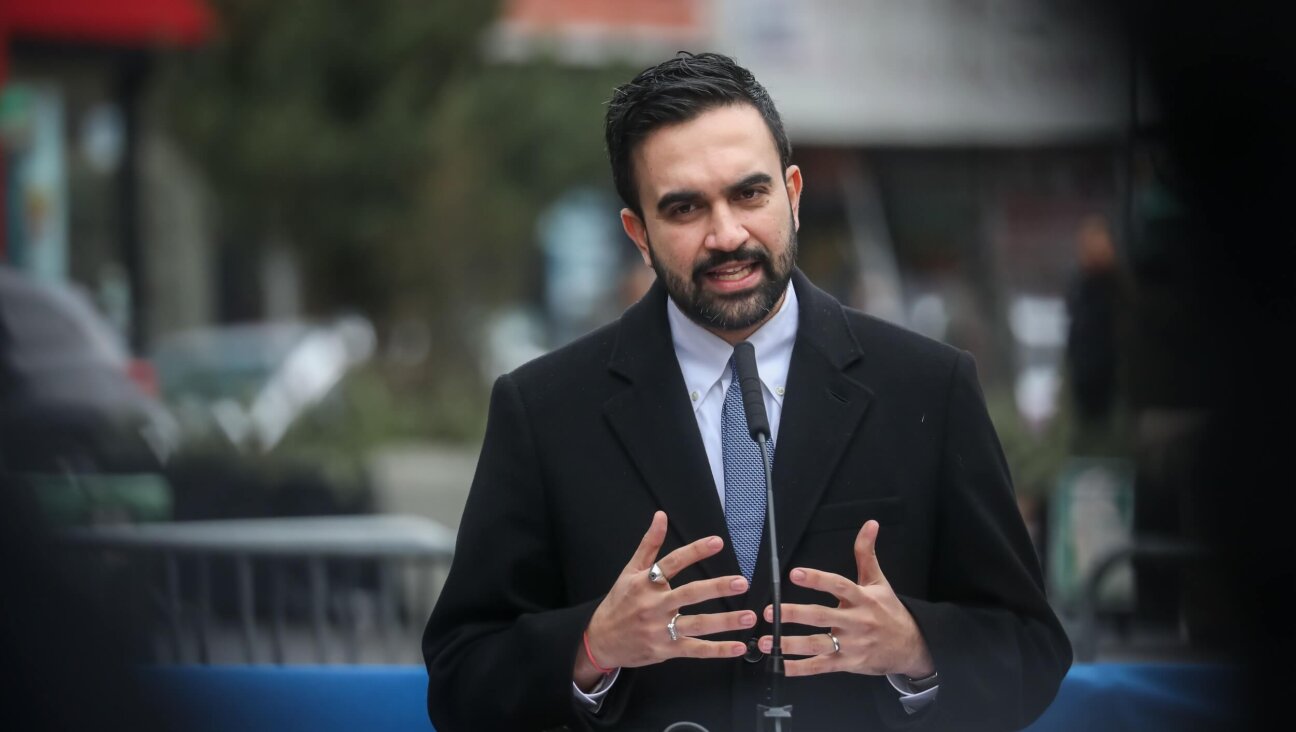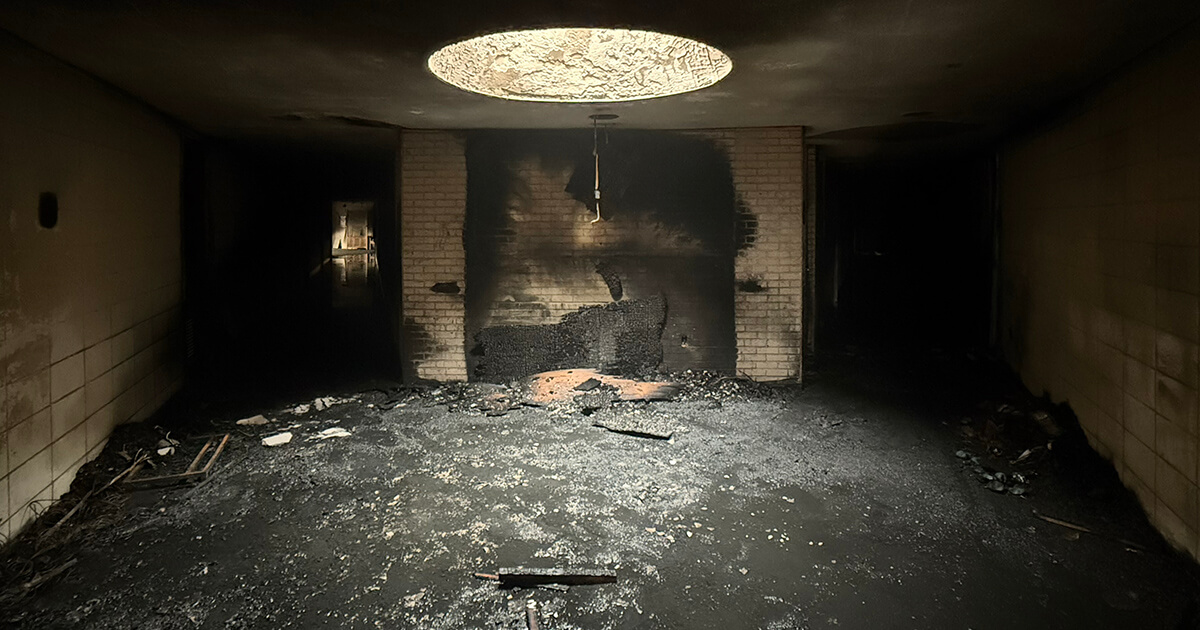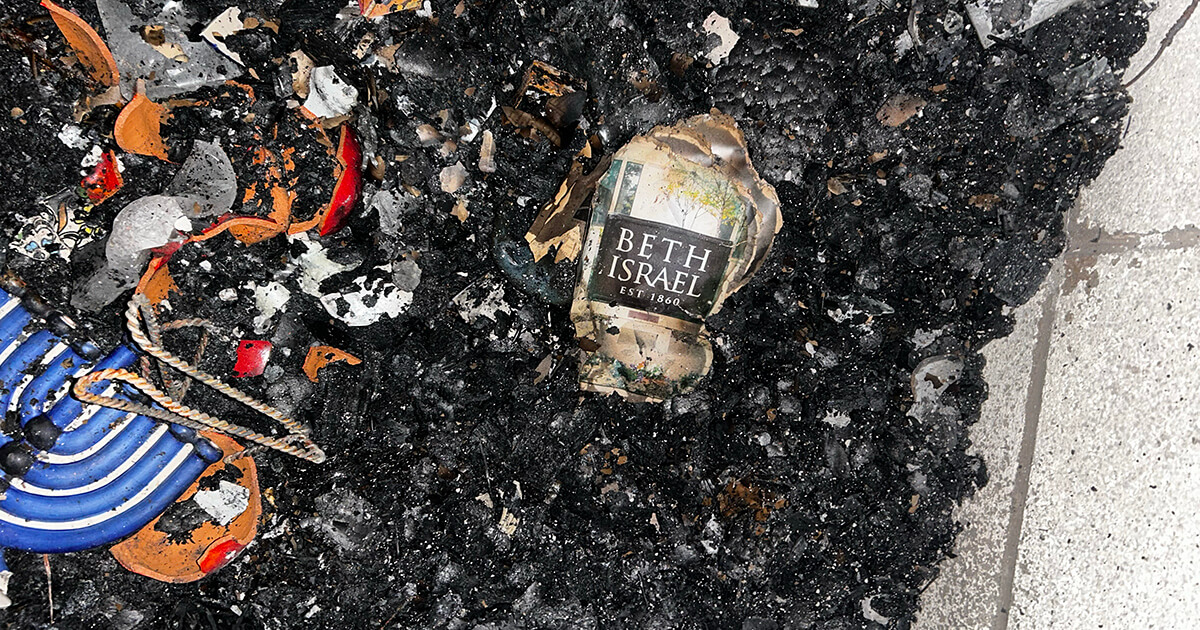‘Car Nidre’ and shofar flash mobs: here’s what the High Holidays might look like

The backyard of Chabad Heights, a synagogue in Crown Heights, Brooklyn, where Rabbi Ari Kirschenbaum will conduct High Holiday services. Image by Courtesy of Rabbi Ari Kirschenbaum
The Torah tells us how to apologize, how to make burnt offerings, and even how to put on our shoes. What it doesn’t specify is how to host inspiring, authentic High Holiday services in the middle of a pandemic.
So this year, synagogues are figuring that out on their own — and with each other.
The High Holidays — the period between Rosh Hashanah on September 18 and Yom Kippur on September 28 — are the central religious events of the Jewish calendar, and the busiest times of year for synagogues. Through crowded services, shofar blowing, and dancing, they affirm not just religious faith but the communal bonds that congregations cultivate year-round.
“Deep down people crave being together, especially in the High Holiday season,” said Rabbi Ari Kirschenbaum of Brooklyn synagogue Chabad Heights. “That’s the time of year when they charge up their batteries.”
Rabbis acknowledge that most celebrations will take place on virtual platforms, but they’re determined that the High Holidays will be more than a five-hour version of Zoom Shabbat. Those interviewed by the Forward are embracing a two-pronged challenge: improving on current formats to offer more engaging virtual services and devising safe in-person events.
“Through the harshest times, when Jews really had to struggle to persevere in Jewish life, we’ve always gotten creative,” said Rabbi Stewart Vogel of Temple Aliyah in Los Angeles.
Shofar “flash mobs”
With most synagogues planning to conduct core High Holiday services online, leaders are seeking out specific rituals that congregants can share in real time. One of those is the blowing of the shofar. Not only is the shofar an iconic symbol of Jewish ritual life, for some it’s a religious obligation to hear its sound in person, rather than virtually.
Some synagogues will organize what Rabbi Lizzi Heydemann of Mishkan, a synagogue in Chicago, called a “shofar flash mob.” One or several shofar blowers will travel to different neighborhoods throughout the day, and congregants will gather to hear them at designated times. In congregations where a large proportion of members actually own shofars, rabbis may simply pause services and invite them to play the instrument outside.
“It’s a good balance between being safe and giving people those hallmark moments,” said Rabbi Yohanna Kinberg of Kirkland, Wash.’s Congregation Kol Ami, who is also organizing communal shofar sessions.
“Car nidre” and services in person
Earlier this spring, Temple Aliyah’s Vogel officiated a bar mitzvah on a warehouse’s loading dock, with family and friends gathered in cars below to watch. It was a “beautiful experience,” he said, and it made him look at other outdoor, car-friendly spaces — namely, his synagogue’s parking lot — in a new light.
Now, he’s hoping to host a “car nidre,” service, in which congregants will gather in the parking lot to hear Kol Nidre, a song-filled service that takes place on the night before Yom Kippur. Depending on public health guidelines in effect this fall, attendees will either open their windows to hear the service or listen through the speakers in their cars. Either way, the gathering will allow them to experience an emotional, highly sensory service that’s difficult to replicate online.
Orthodox synagogues that are prohibited according to Jewish law from streaming services online may rely even more heavily on outdoor space. Chabad Heights’s Kirschenbaum said he’s lucky that his synagogue has a backyard where he can host services, albeit with fewer attendees than usual.
Despite the reduced capacity, he doesn’t anticipate turning people away: many are wary of in-person services and have become accustomed to davening in their homes.
Pod services and watch parties
Ohr Kodesh Congregation, a Conservative synagogue in Chevy Chase, Md., will be live-streaming all High Holiday services, Cantor Hinda Labovitz said. But many congregants abstain from technology on Shabbat and won’t use computers, despite halachic dispensations granted due to coronavirus. To serve them, she’s currently training twelve lay leaders to conduct small, socially-distanced services in congregants’ backyards. Those unwilling to attend virtually can join one of these “pods” to hear an in-person version of the High Holiday services.
And Rabbi Sandra Lawson, associate chaplain for Jewish life at Elon College, said she plans to encourage students, who might otherwise be observing the High Holidays alone, to watch online services outside and in their dorms — together.
“Everyone understands this year isn’t going to be the same, but we also can’t let the holidays go by and not do anything,” she said.
Zoom, improved
Since the onset of coronavirus, most synagogues interviewed by the Forward have shifted to virtual services, with clergy leading rituals in real time from their homes. As the High Holidays approach, many plan to improve on that format by investing in high-quality recording technology.
After deciding that High Holiday services would be remote, Emanuel Congregation in Chicago hired an event production team to design its slate of virtual offerings. Leah Jones, the synagogue’s president, said that while portions of services will be live, leaders will pre-record “as much as we can” in order to avoid technology glitches, deliver a polished audio-visual experience and fight “Zoom fatigue,” the boredom with informal online events all too familiar for many Americans.
It’s also an approach that will allow more congregants to participate in the service. Rabbi Maya Glasser of New Brunswick, N.J.’s Anshe Emeth Memorial Temple said that pre-recording would preserve one of the synagogue’s most important traditions: inviting teenagers to the bima to read Torah and blow the shofar during the High Holidays. Young congregants will visit the sanctuary individually to record parts of the service throughout the summer, she said, and their contributions will be interspersed with live rituals led by clergy on Zoom.
“We want to honor our community by getting as many people as possible in front of the camera safely,” Jones said.
Tashlich “docent tours”
“Tashlich,” a Rosh Hashanah ritual in which Jews stand by a body of water and symbolically cast away the year’s sins, is an ideal coronavirus custom: It takes place completely outside and can be conducted in small groups. Many synagogues are using tashlich to create in-person experiences for congregants who will otherwise gather online.
Kinberg plans to organize a tashlich lunch at a local lake. Family units can bring their own food and picnic blankets, and clergy will use a speaker system to invite people to the shore in small groups to perform the ritual. Labovitz, meanwhile, envisions “docent tours” to a creek near her synagogue: Clergy will lead small groups to various distanced access points to perform the ritual, perhaps accompanying it with shofar blowing.
Rosh Hashanah in a box
Kinberg said that Congregation Kol Ami’s “main innovation” for this year’s High Holidays are take-home “kits” for use throughout the season. Each family will receive a box that includes crafts for kids, question cards to facilitate discussion and even a honey cake. “We’re trying to bring some stuff from the synagogue into people’s homes,” she said.
Labovitz, whose synagogue Ohr Kodesh may also distribute High Holiday kits, added that they can be a life-saver for families who rely on youth services and activities to get through a technology-free holiday.
“Entertaining kids is really tough, especially if you don’t break it up by going to shul,” she said.
Schmoozing is here to stay
As important as services themselves for many congregants are the kiddushes, coffee chats and catch-ups that accompany them as synagogue-goers drift in and out of the sanctuary. Many synagogues relying heavily on live-streamed services are devising ways to facilitate that organic social connection.
Rabbi Francine Roston, who leads Glacier Jewish Community/B’nai Shalom, a small synagogue in Kalispell, Mont., is banding together with leaders at three other synagogues in the state to offer a schedule of classes — from meditations to textual studies — during and around the High Holidays, allowing congregants to drift from one to the other.
Rabbi Amichai Lau-Lavie, who leads New York City’s Lab/Shul, said that except during events like Torah readings, attendees would be able to virtually wander between concurrent services, classes and social events, as if walking through an online building. “You could spend the first hour doing yoga, and then walk up to the second ‘floor’ to do watch services, and then go to the third ‘floor’ to hang out with your kids,” he said. “We will have this medley of options.”
Irene Katz Connelly is an editorial fellow at the Forward. You can contact her at [email protected].

















